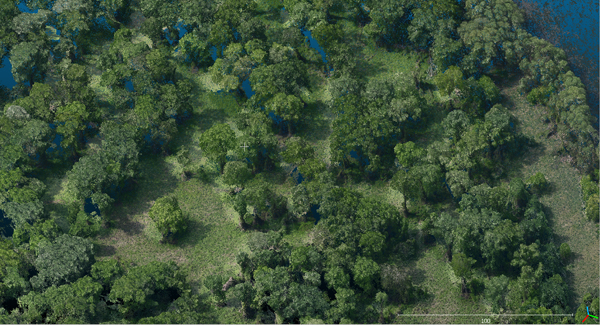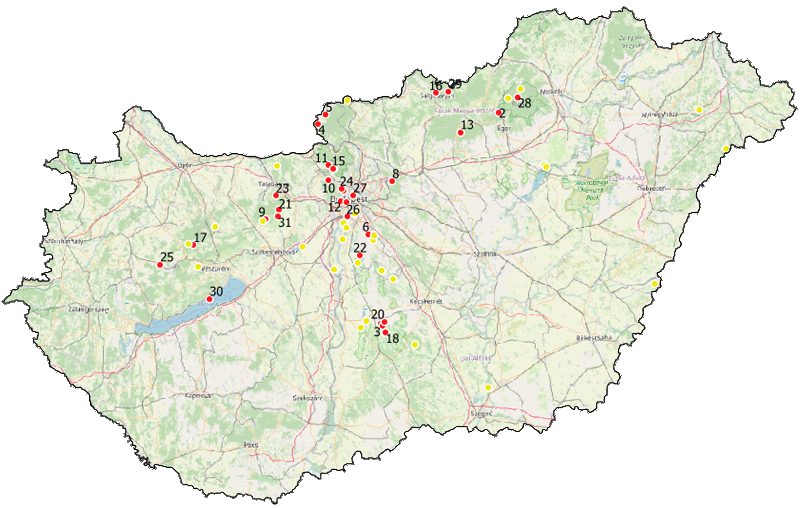Interspect Ltd.
HRAMS
High Resolution Aerial Monitoring System
By analysing the orthophotos taken at an annual or more frequent rate, with a range of 0,5-5cm spatial resolution and the 3D surface models of aerial surveys, the possibility will be open to map the vegetation of the upper canopies on species level. Further on, it will be possible to follow up the changes at forest edges and inside the forest and meadows the upper canopy-level- and grass-dynamics in a more accurate and productive way than with any other working procedure on this scale ever before. During the fieldwork analyses, the vectorgraphic spatial data obtained from aerial surveys can be filled with information from a number of research fields. A survey carried out in the accurate moment contributes to the baseline reports of interventions and the control of the rehabilitation and environmental reconstruction.

Winter and summer aspects of Submontane forest and the detail of the spatial database
Time series of large areas with an accuracy range of decimetres (Detail of the Bakonybél sample area)
HRAMS Key principles
Categories of the plots
I. Waterbird nesting areas (flown three times per year) ;
II. Representative sample area of the landscape with optional orientation (areas flown 1-4 times per year);
III. Representative sample area of the landscape with optional orientation and aspect ratio (areas flown 1-5 times per year)
(Spatial resolution of the orthophoto, economic sample area size, root-mean-square error (RMS), digital substance and area of use)
| Category |
I. |
II. |
III. |
| Spatial resolution | 0,5 cm | 2 cm | 4 cm |
| Area size | Depending on the nesting sites size | 200 × 300 m | 1000 × 2000 m |
| Planimetric accuracy | 20 cm | 20 cm | 20 cm |
| Products | Orthophotos with full area coverage | Orthophotos with full area coverage, oblique photogrammetric products and three-dimensional models | Orthophotos with full area coverage, oblique photogrammetric products and three-dimensional models |
| Flight time above area |
2 - 10 min. (Depending on area size) | ~ 3 min. | 5 - 12 min. |

Beside 0,5- 5 cm field resolution orthophotos, the coloured 3d spatial models of the plots are also available.
(Detail area of the Háros-peninsula Forest Reserve)

From the winter photogrammetric survey, a large resolution terrain model can be derived
(Detail of the Bakonybél sample area)
Active areas of the network

Experimental areas of the network 2018-2019
From the workflow
We combine areal remote sensing and field studies in our survey. The parameters are measured with the interpretation of the 2-5 cm field resolution orthophotos and the field survey. In some cases, the process can be accelerated by semi-automatic classification. In other cases manual delimitation and identification are necessary. This mainly depends on the interdependence of the vegetation, the species and the condition of the production area.
The individual attribute columns of the polygons of the gap- and overlap-free vector-graphics polygon network are generated on the orthophoto with full area coverage. During the fieldwork, these will be filled with additional data by the experts. The field survey – as data collection and later, as control phase – is realized in all cases except the nesting areas where the heron species are analysed from orthophotos with 0,5 cm detail that was taken without disturbance.